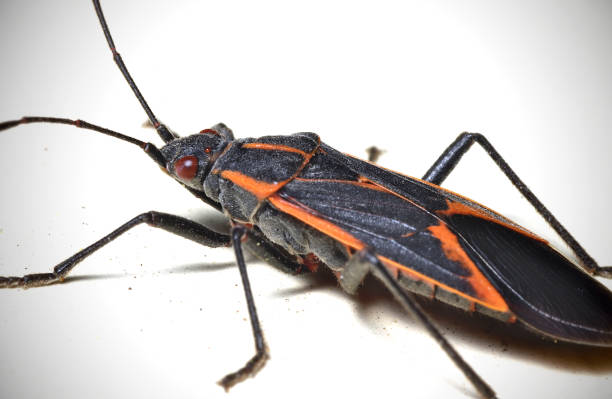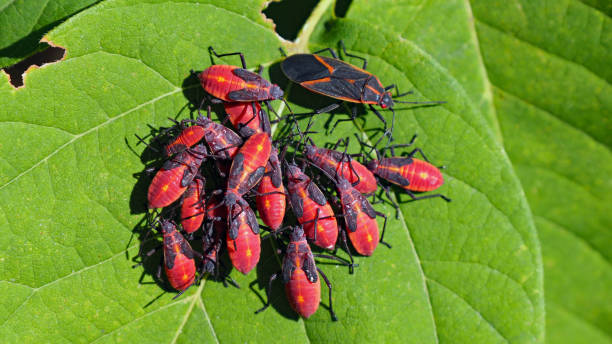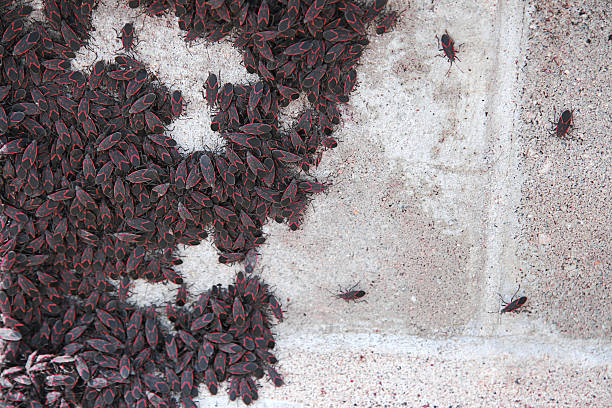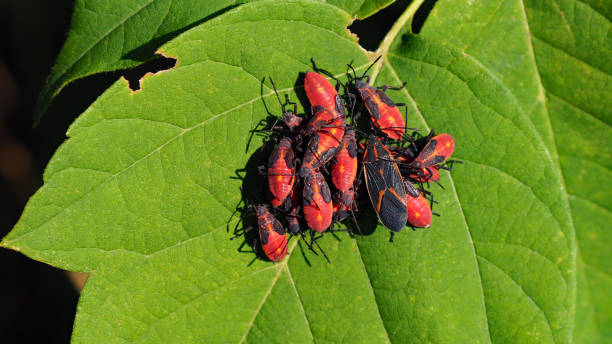Table of Contents
Scientific Classification
| Kingdom | Animalia |
| Phylum | Arthropoda |
| Class | Insecta |
| Order | Hemiptera |
| Family | Rhopalidae |
| Genus | Boisea |
| Species | Boisea trivittata |
| Scientific Name | Boisea trivittata |
1. Description
The Boxelder Bug is a small yet striking insect that catches the eye. Known for its vibrant appearance, it tends to invade homes during certain seasons. These adult bugs usually measure around 12–14 mm, which is about half an inch long. Their bodies are predominantly black, adorned with bright red or orange markings that stand out, especially on their thorax and the edges of their wings. When they settle down, those red lines create a distinctive X-pattern on their backs. The younger ones, called nymphs, are smaller and a vivid red, without the black wing coverings.
With their flat, elongated bodies, six long legs, and two antennae that reach out from their heads, they certainly have a dramatic look. Fortunately, they’re mostly harmless to both humans and plants, though they can be a bit of a nuisance.

2. Distribution
Boxelder bugs come from North America. They are especially found in the United States and some areas of southern Canada. Their name comes from their love of the boxelder tree (Acer negundo). They also eat other maples and ash trees. They mainly live in the Midwestern and Eastern U,S. People have moved west and into parts of Central America.
3. Habitat
Boxelder bugs tend to make their homes in forests, wooded suburbs, and gardens. They have a particular fondness for areas with boxelder, ash, or maple trees. However, what they’re really famous for is their knack for sneaking into our homes as fall rolls around. When the temperatures drop, they start searching for cozy spots to hibernate. They often slip in through tiny cracks in the siding or around windows.
These little critters prefer to hibernate in dry, warm, and secure places. Ideal spots for them include attics, basements, wall voids, and sunlit buildings.
4. Diet
Box They primarily feed on:
- Boxelder trees (especially seeds and developing leaves)
- Maple trees
- Ash trees
They don’t usually cause serious harm to these trees. However, their feeding can lead to minor leaf deformation or spotting. This is especially true for young trees or when their numbers are high.
During indoor overwintering, boxelder bugs do not feed at all.
5. Behavior
Boxelder bugs are quite the social butterflies, often seen hanging out in large groups during the fall and spring. In the summer, they tend to be a bit more elusive, spending their time high up in trees munching on leaves. But when the temperatures drop, their gregarious side comes out to play. You can find them clustering together on sunny walls, soaking up the warmth and looking for a cozy spot to sneak inside.
These little guys are pretty slow and harmless. They won’t bite you, but if you handle them, they might give you a little pinch that could cause some minor irritation.
One of their most frustrating habits is crashing in your home during the winter months. While they can be a bit of a nuisance, they’re really not a threat at all.
6. Lifespan
The average lifespan of a boxelder bug is about a year, but this can vary depending on their surroundings. These little critters usually hibernate as adults, wake up in the spring, find a mate, and lay their eggs. By late summer or early fall, the next generation is all grown up!
7. Reproduction and Lifecycle
Boxelder bugs go through a process called incomplete metamorphosis, which includes three main stages: egg, nymph, and adult.
Lifecycle Breakdown:
Spring: The adults wake up from their winter slumber and start mating.
Late spring to early summer: Females lay their eggs in safe spots like bark crevices and leaves.
Summer: The eggs hatch into vibrant red nymphs, which will molt several times as they grow.
Fall: The new adults reach maturity and look for cozy places to spend the winter.
Typically, there are one or two generations each year, depending on the climate.

8. Predators
Boxelder bugs have few natural enemies. This is because they taste bad and have bright warning colours. This is called aposematism.
Some known predators include:
- Spiders
- Praying mantises
- Birds (though many avoid them)
- Rodents (occasionally)
Still, predation does not significantly impact their population.
9. Adaptations
- Boxelder bugs have some pretty clever adaptations that help them thrive in their environment:
- Coloration: Their striking black and red colors serve as a warning to predators, letting them know that these bugs don’t taste very good.
- Overwintering Strategy: These bugs have a knack for finding cozy spots to hibernate, like inside our homes, which helps them ride out the chilly winter months.
- Resistant Exoskeleton: Their tough outer shell minimizes water loss and offers a layer of protection against predators and harsh conditions.
10. Conservation Status
Boxelder bugs are neither endangered nor threatened. In fact, they’re quite plentiful, especially in areas where boxelder or maple trees thrive. While they can sometimes become a nuisance in homes, that might call for some pest control measures.
There’s no indication that their populations are in jeopardy. They simply aren’t considered harmful enough to warrant large-scale removal.

11. Allergies and Human Interaction
- Boxelder bugs might not pose any real threat, but they can cause mild allergies for some folks. These reactions usually happen because of:
- – Breathing in allergens from dead bugs
- – Skin contact when they get squished (which can lead to minor irritation or a rash)
- – Staining: Their droppings can leave marks on fabrics and walls
- They don’t sting or carry diseases. However, when you crush them, they release a foul odor from their scent glands, which can be quite bothersome.
- To keep these bugs at bay, homeowners should consider:
- – Sealing up entry points around windows, doors, and vents
- – Using screens and weatherstripping
- – Vacuuming them up instead of squishing them
- – Steering clear of chemical sprays unless the infestation is really bad
Conclusion
The Boxelder Bug might be a bit of a nuisance during certain seasons, but it also highlights the fascinating ways some insects adapt to both nature and our human environments. With its eye-catching appearance, gentle demeanor, and intriguing life cycle, this little creature plays a small yet captivating role in our local ecosystems. It primarily feeds on plant sap, cleverly dodges most predators, and sometimes even makes itself comfortable in our homes.
When you spot these bugs, it often signals a shift in the seasons, particularly as the weather cools down. In the grand scheme of nature, they’re just doing what they’ve evolved to do: survive, feed, and thrive—even if we’d prefer they kept their distance!



